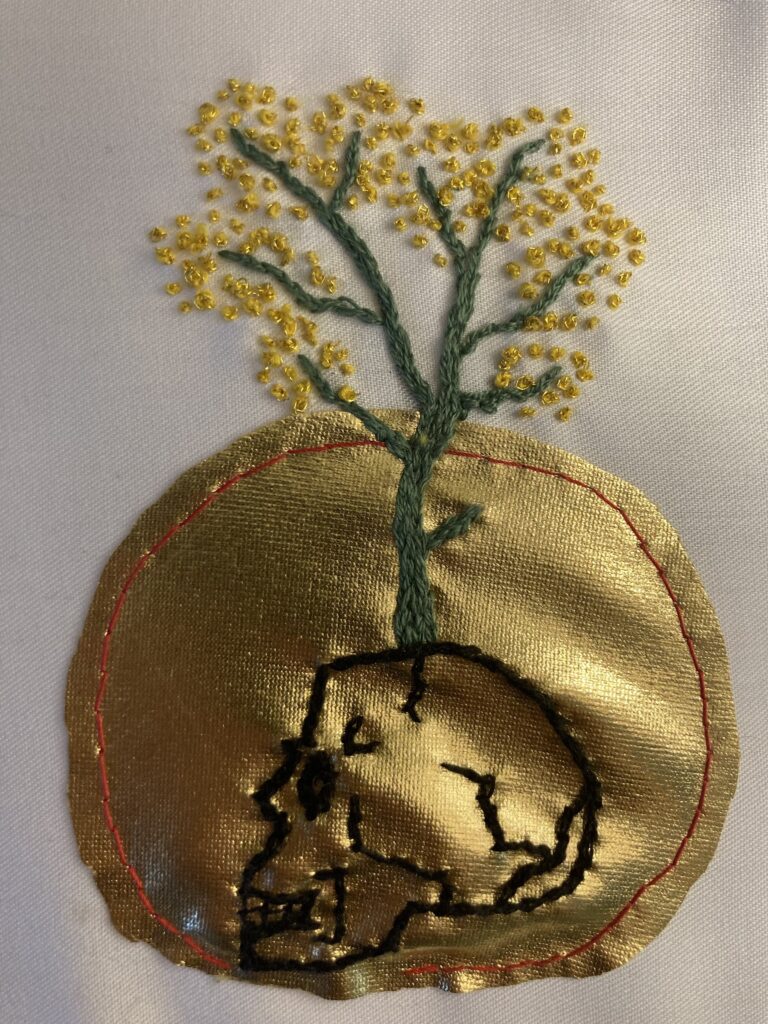
The embroidery is a commentary on migrant death during the Mexico/US border crossing using Christian ideologies of death and remembrance. It’s in the style of Christian icon painting to show that the migrant, like any saint or Jesus himself, is divine and should be given the dignity of life they deserve. The migrants’ deaths are barely acknowledged and in ways that dehumanize them by the American government. The haloed skull, glorified as a celestial body, signifies that the migrants are just as holy and precious in their Christianity and in the Christianity undercurrent of the American politics being waged against them. As a saint, the migrant can both be venerated and grieved, which gives agency to them and their remaining families as the families can’t properly grieve the dead in their traditional Catholic/Protestant ways without their loved ones’ bodies. The skull shows the harsh truth of their death and how the desert consumes them. The mustard tree, from the mustard seed parable, carries the golden color over from the halo signifying the inward and outward holiness of the person. As in the parable the migrant, like the mustard seed, has the potential to sustain itself and others, something that they likely crossed the border in order to do so, even if it starts as the tiniest seed or the tiniest hope. When a migrant has their life so brutally taken from them by state sovereignty, the state effectively puts an end to the possibilities that life has to offer them. By creating this icon of a migrant, it follows the tradition of using icons as a pathway to see God’s kingdom, a time and place where the God of the poor and oppressed reigns rather than a world ruled by state sanctioned violence and death.